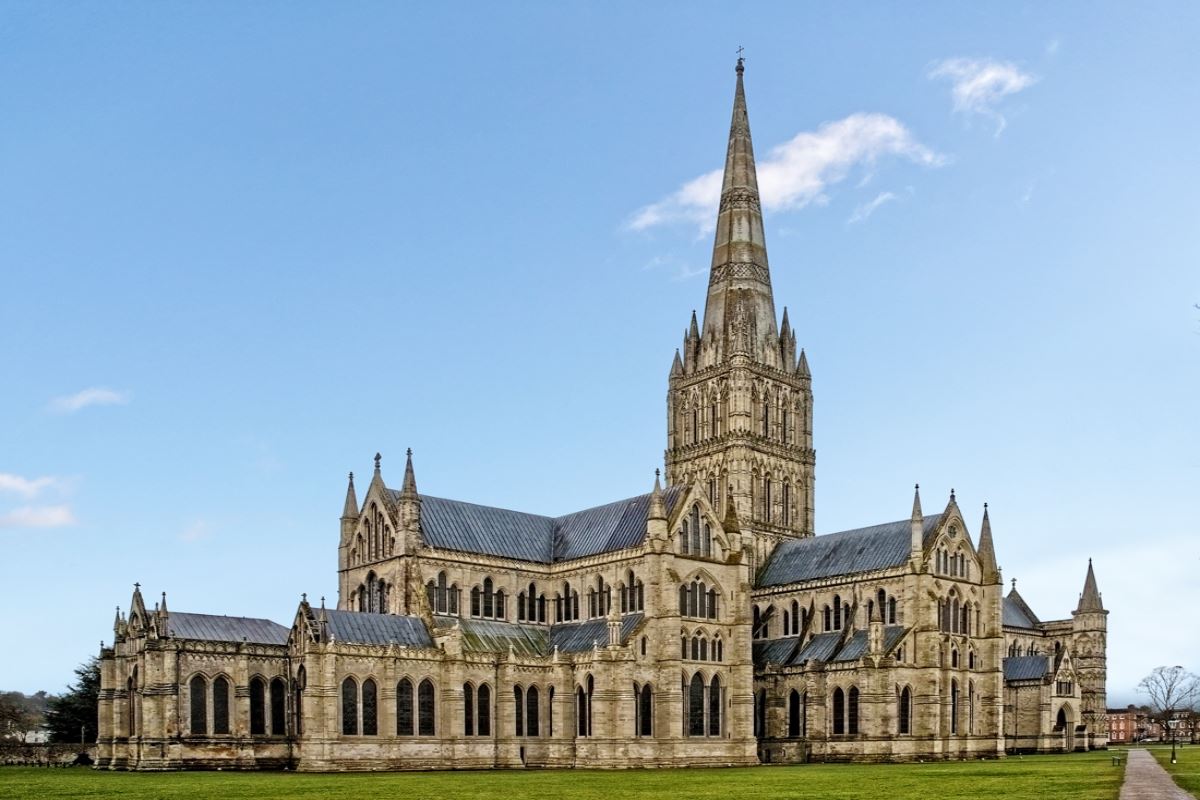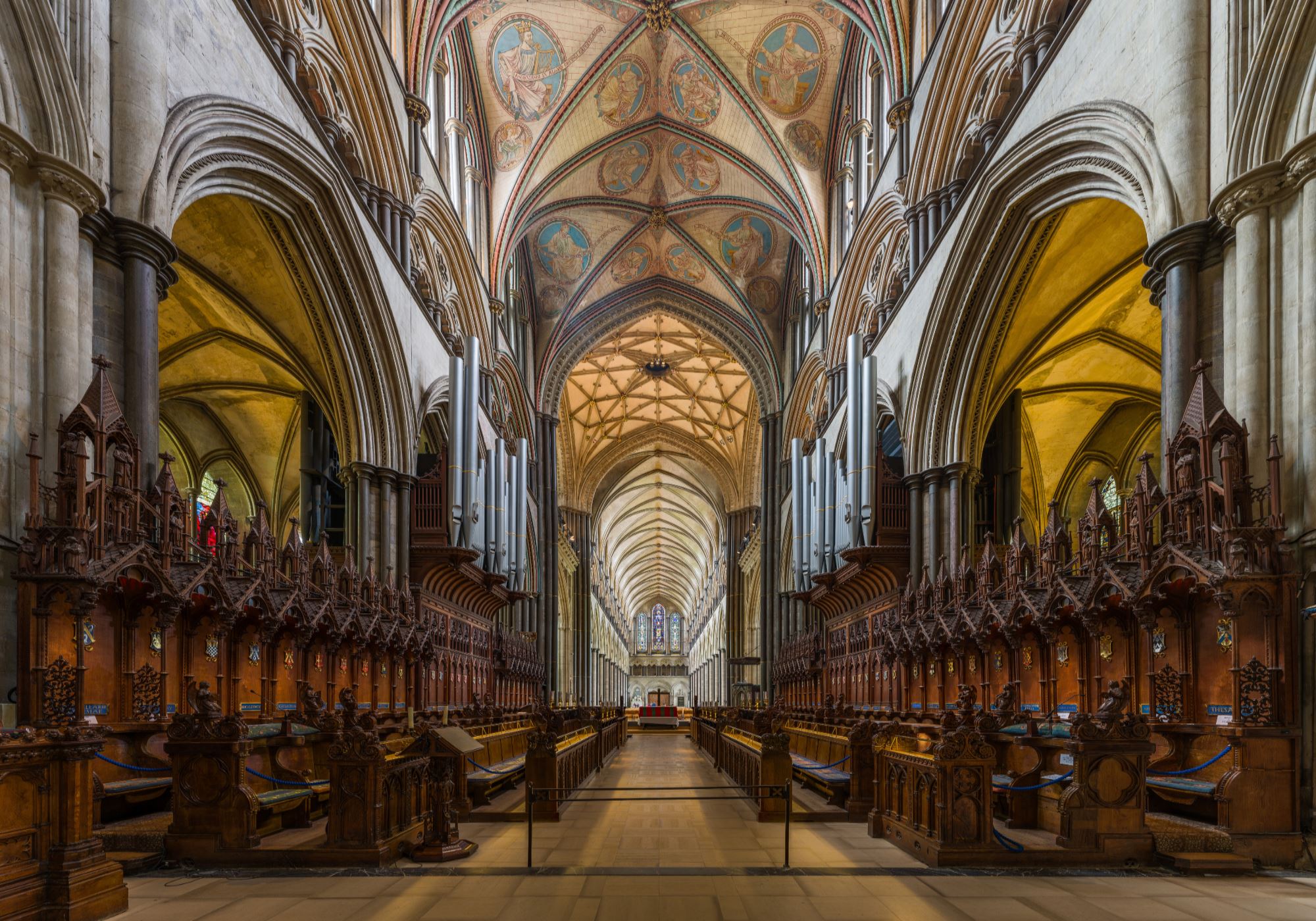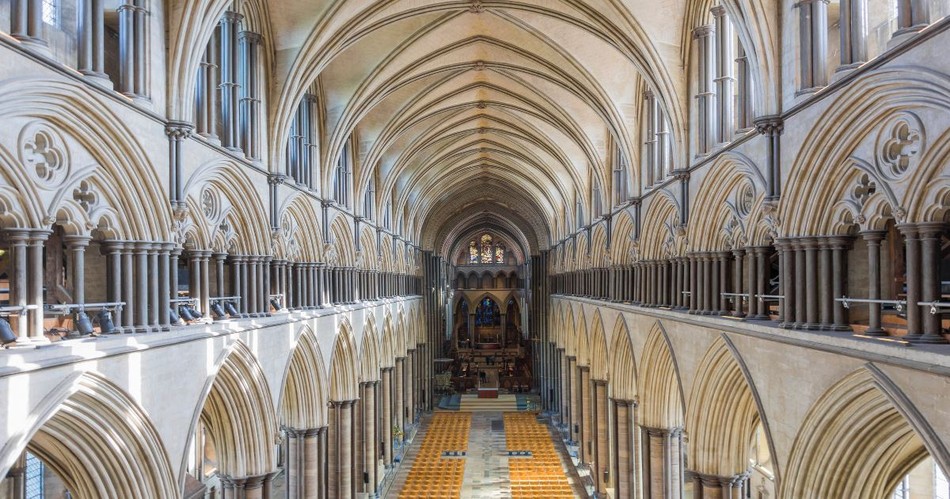Architecture of Christianity
Christianity has spawned many works of architecture. One of the most beautiful is this at Old Sarum, England, just ten miles from Stonehenge. Unlike most Medieval cathedrals, Salisbury was built in a single campaign. Bishop Poore laid the first five stones on this day, April 28, 1220, one each for himself, Archbishop Stephen Langton, Pope Honorius III, Earl William and Countess Ela of Salisbury. By 1237 the choir and east transepts were built and by 1258 the nave and main transepts. The plans and their implementation experienced few alterations. Consequently, Salisbury has more unity of design than most English cathedrals of the period.

Photo by Antony McCallum of Salisbury Cathedral's Exterior
Salisbury Cathedral
Just who did design Salisbury is not known. Historian Paul Johnson suggests that Elias of Dereham and Nicholas of Ely combined their talents. At any rate, Bishop Poore was the motivating force behind the project. He obtained the papal authority to build the cathedral and to locate it on a broad, flat piece of ground rather than on an earlier site. Had he built on the old site, the new would have had to accommodate itself to old foundations and the structure could not have had the charm of the present building.
Salisbury Cathedral is in the Early English Gothic style. Gothic employs pointed arches, slender vertical piers, buttresses and diagonals for an austere effect. Salisbury is shaped as a cross, ever the symbol of Christian faith. Its interior is well-lighted. The flying buttresses (outside arches) are later additions. They became needful because of the one major change made to the original conception by a later age.
The original plan called for a low tower. 110 years after the first stone was laid, the tower was doubled and Richard of Farleigh designed the octagonal spire which now completes the whole, making it the second tallest in Europe. The addition of the spire added so much weight the crossing piers bent. They support almost 6,500 tons. Consequently new supports had to be added.

Photo by DAVID ILIFF. License: CC-BY-SA 3.0 of Salisbury Cathedral Choir Pews
Faith Inspired Design
The cathedrals of Europe are symbols of intense faith. It took faith to start building one. Most were not completed in one generation or even in two. Their spires, straining toward heaven, are standing prayers to God. In their windows we read the gospel story. Not a few ornaments remind us of the lurking powers of hell. Salisbury is little encumbered with such detail, and the simplicity of its decor has been described as peculiarly English in its understatement. Salisbury Cathedral remains a testimony to an age of faith.
Bibliography:
- Johnson, Paul. British Cathedrals. London: Weidenfeld & Nicolson, c1980.
- "Poor, Poore, Poure, or Le Poor, Richard." Dictionary of National Biography. Edited by Leslie Stephen and Sidney Lee. London: Oxford University Press, 1921 - 1996.
- Smethurst, Canon A. F. The Pictorial History of Salisbury Cathedral; one of Christendom's loveliest landmarks. London: Pitkin Pictorials, ca. 1957.
Article Image from Jack Pease on Flickr
Last updated April, 2007.


_639003522088907085.jpg)
